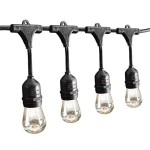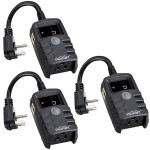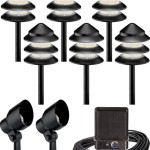What Material Outdoor Furniture Lasts Longest?
Selecting outdoor furniture involves considering aesthetics, comfort, and, crucially, durability. The longevity of outdoor furniture depends significantly on the materials used in its construction. Exposure to the elements, including sun, rain, snow, and fluctuating temperatures, can degrade materials over time. Choosing the right material is therefore essential for maximizing the lifespan of your outdoor investment.
The ideal material for outdoor furniture balances resistance to environmental factors with structural integrity and aesthetic appeal. Various materials offer different benefits and drawbacks, requiring careful evaluation to determine the best fit for specific climates and usage patterns. This article will explore the materials known for their longevity in outdoor settings, examining their strengths, weaknesses, and maintenance requirements.
Teak: The Gold Standard for Outdoor Durability
Teak is widely regarded as one of the most durable and long-lasting materials for outdoor furniture. This tropical hardwood is naturally rich in oils and rubber, which provide exceptional resistance to moisture, rot, insects, and decay. These natural properties make teak uniquely suited for withstanding harsh weather conditions without the need for extensive treatments or preservatives.
The high oil content in teak also contributes to its resistance to warping and cracking, common issues with other types of wood exposed to varying humidity levels. As teak ages, it develops a beautiful silver-gray patina, a characteristic often prized by those seeking a natural and weathered aesthetic. This patina does not compromise the wood's structural integrity; it is simply a surface change caused by exposure to ultraviolet (UV) light.
While teak is a premium material with a higher initial cost, its exceptional durability and minimal maintenance requirements often make it a cost-effective choice in the long run. Properly maintained teak furniture can last for decades, making it a worthwhile investment for those seeking long-term value.
To maintain teak furniture, regular cleaning with a mild soap and water solution is recommended. This helps remove dirt and debris that can accumulate on the surface. For those who prefer to maintain the original golden-brown color of teak, specialized teak sealers can be applied periodically. However, allowing the teak to weather naturally to its silver-gray patina does not compromise its durability.
The sourcing of teak is an important consideration. Sustainable teak harvesting practices ensure the preservation of teak forests. Consumers should look for certifications like the Forest Stewardship Council (FSC) to ensure that the teak they purchase comes from responsibly managed forests.
Aluminum: Lightweight Strength and Corrosion Resistance
Aluminum is another popular material choice for outdoor furniture, prized for its lightweight nature, strength, and resistance to corrosion. Unlike steel, aluminum does not rust, making it well-suited for environments with high humidity or exposure to saltwater. This inherent corrosion resistance significantly extends the lifespan of aluminum furniture.
Aluminum furniture is often powder-coated, a process that applies a protective layer of colored powder to the metal's surface. This powder coating enhances the aluminum's resistance to scratches, fading, and chipping, further improving its durability. Powder coating also provides a wide range of color options, allowing for greater design flexibility.
The lightweight nature of aluminum makes it easy to move and rearrange outdoor furniture, a significant advantage for those who frequently reconfigure their outdoor spaces. Aluminum furniture is also relatively easy to clean and maintain, requiring only occasional washing with soap and water.
While aluminum is generally durable, its strength-to-weight ratio means that it can be susceptible to dents or bending under significant impact. Thicker gauge aluminum frames offer increased strength and resistance to damage. In areas prone to high winds, heavier aluminum furniture or securing the furniture to the ground may be necessary to prevent it from being blown around.
Recycled aluminum is increasingly used in the production of outdoor furniture, making it an environmentally friendly choice. The recycling process for aluminum requires significantly less energy than producing new aluminum, reducing its carbon footprint.
Recycled Plastic Lumber: Sustainable and Weatherproof
Recycled plastic lumber is a relatively new but increasingly popular material for outdoor furniture. It is made from recycled plastic, such as milk jugs and detergent bottles, diverting these materials from landfills and repurposing them into durable and weather-resistant furniture.
Recycled plastic lumber is virtually maintenance-free, requiring no painting, staining, or sealing. It is resistant to moisture, rot, insects, and fading, making it an excellent choice for outdoor environments. Unlike wood, it will not splinter, crack, or warp, ensuring that it remains safe and aesthetically pleasing for years to come.
The durability of recycled plastic lumber depends on the quality of the plastic used and the manufacturing process. High-density polyethylene (HDPE) is a common type of plastic used in recycled plastic lumber, known for its strength and weather resistance. Furniture made from high-quality recycled plastic lumber can withstand harsh weather conditions without significant degradation.
Recycled plastic lumber is available in a wide range of colors and styles, mimicking the look of natural wood. However, it is important to note that darker colors can absorb more heat from the sun, making the furniture warmer to the touch. Lighter colors are generally preferred in hot climates.
While recycled plastic lumber is a durable and sustainable material, it can be more expensive than some other options, such as lower-quality wood or plastic furniture. However, its long lifespan and minimal maintenance requirements often make it a worthwhile investment in the long run.
Wrought Iron: Heavy-Duty and Classic
Wrought iron is a traditional material for outdoor furniture, known for its heavy weight, durability, and classic aesthetic. It is a strong and sturdy material that can withstand harsh weather conditions, making it a popular choice for garden benches, tables, and chairs.
The primary drawback of wrought iron is its susceptibility to rust. To prevent rust, wrought iron furniture is typically coated with a protective finish, such as paint or powder coating. However, even with protective coatings, rust can develop over time, especially in areas with high humidity or exposure to saltwater.
Regular maintenance is essential for preserving the lifespan of wrought iron furniture. This includes cleaning the furniture regularly with soap and water and touching up any areas where the protective coating has been chipped or scratched. Applying a rust inhibitor can also help prevent rust from forming.
The heavy weight of wrought iron furniture can be both an advantage and a disadvantage. Its weight makes it resistant to being blown around by high winds, but it also makes it difficult to move and rearrange. Consider the weight of the furniture when choosing wrought iron, especially if you plan to move it frequently.
Wrought iron furniture often features intricate designs and details, adding a touch of elegance and sophistication to outdoor spaces. Its classic aesthetic complements a variety of architectural styles making it a timeless choice for outdoor décor.
Stainless Steel: Modern Elegance and Rust Resistance
Stainless steel is a modern material that offers excellent corrosion resistance and a sleek, contemporary aesthetic. It is a popular choice for outdoor furniture, particularly in coastal areas where exposure to saltwater is a concern.
Unlike regular steel, stainless steel contains chromium, which forms a protective layer on the surface of the metal, preventing rust from forming. The grade of stainless steel affects its corrosion resistance, with higher grades offering greater protection. 304 stainless steel is a common grade used in outdoor furniture, offering a good balance of durability and affordability.
Stainless steel furniture is strong and durable, able to withstand heavy use and harsh weather conditions. It is also relatively easy to clean and maintain, requiring only occasional wiping with a damp cloth.
While stainless steel is rust-resistant, it can still be susceptible to staining and discoloration, particularly from exposure to salt water or chlorine. Regular cleaning with a stainless steel cleaner can help prevent these issues.
Stainless steel furniture can be more expensive than some other options, but its long lifespan and minimal maintenance requirements make it a worthwhile investment for those seeking a durable and stylish outdoor furniture option.
In summary, the best material for outdoor furniture depends on individual needs and preferences, considering factors such as climate, budget, and aesthetic preferences. Teak stands out as the gold standard for durability, while aluminum offers a lightweight and corrosion-resistant option. Recycled plastic lumber provides a sustainable and weather-resistant alternative. Wrought iron offers a classic appeal but requires more maintenance, and stainless steel provides a modern and rust-resistant option. Careful consideration of these materials and their properties will help ensure that your outdoor furniture investment will last for years to come.

What Outdoor Furniture Lasts Longest Pros Cons Of 4 Materials Lagoon Design

What Outdoor Furniture Lasts Longest Pros Cons Of 4 Materials Lagoon Design

What Patio Furniture Material Lasts The Longest

What Patio Furniture Material Lasts The Longest

How Long Does Rattan Furniture Last The Ultimate Guide Direct

How Long Should Patio Furniture Last Hedgeapple

How Long Should Rattan Furniture Last Garden

Which Glider Material Lasts The Longest Porch Swing

Patio Furniture Durability How Long Does It Last

What Patio Furniture Material Lasts The Longest
Related Posts







